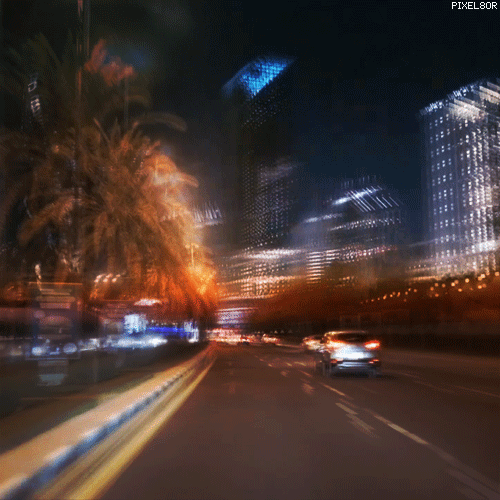time-istheultimateillusion
201 posts
Latest Posts by time-istheultimateillusion
“All endings are also beginnings. We just don’t know it at the time.”
— Mitch Albom


“Love is a sacrament that should be taken kneeling”
—Oscar Wilde

𝙵𝚛𝚒𝚎𝚍𝚛𝚒𝚌𝚑 𝙽𝚒𝚎𝚝𝚣𝚜𝚌𝚑𝚎, 𝚃𝚑𝚞𝚜 𝚂𝚙𝚘𝚔𝚎 𝚉𝚊𝚛𝚊𝚝𝚑𝚞𝚜𝚝𝚛𝚊 [𝚘𝚛𝚒𝚐𝚒𝚗𝚊𝚕𝚕𝚢 𝚙𝚞𝚋𝚕𝚒𝚜𝚑𝚎𝚍 𝟷𝟾𝟾𝟹]

𝙵𝚛𝚒𝚎𝚍𝚛𝚒𝚌𝚑 𝙽𝚒𝚎𝚝𝚣𝚜𝚌𝚑𝚎, 𝚃𝚑𝚞𝚜 𝚂𝚙𝚘𝚔𝚎 𝚉𝚊𝚛𝚊𝚝𝚑𝚞𝚜𝚝𝚛𝚊 [𝚘𝚛𝚒𝚐𝚒𝚗𝚊𝚕𝚕𝚢 𝚙𝚞𝚋𝚕𝚒𝚜𝚑𝚎𝚍 𝟷𝟾𝟾𝟹]

𝙵𝚛𝚒𝚎𝚍𝚛𝚒𝚌𝚑 𝙽𝚒𝚎𝚝𝚣𝚜𝚌𝚑𝚎, 𝚃𝚑𝚞𝚜 𝚂𝚙𝚘𝚔𝚎 𝚉𝚊𝚛𝚊𝚝𝚑𝚞𝚜𝚝𝚛𝚊 [𝚘𝚛𝚒𝚐𝚒𝚗𝚊𝚕𝚕𝚢 𝚙𝚞𝚋𝚕𝚒𝚜𝚑𝚎𝚍 𝟷𝟾𝟾𝟹]
Don’t mock pseudo-intellectuals, as by doing so you become one yourself and mock yourself in some warped form of intellectual self harm
A consistent theme on tumblr
Him: my tastes are… unconventional.
Him: i like nietzsche, kant and bukowski
Me:
Me: you’re a straight white dude how is this unconventional

― Haruki Murakami, Hard-Boiled Wonderland and the End of the World
She demands a great deal from life; she reads, dreams of love —always of love.
Ivan Turgenev, A Correspondence (1855)
Many things interested her, and nothing satisfied her entirely.
Ivan Turgenev (b. 9 November 1818)

Albert Camus, from Notebooks 1935-1942; tr. by Philip Thody
To be happy, we must not be too concerned with others.
Albert Camus, The Fall (via philosophybits)
I’m a paradox. I want to be happy, but I think of things that make me sad. I’m lazy, yet I’m ambitious. I don’t like myself, but I also love who I am. I say I don’t care, but I really do. I crave attention, but reject it when it comes my way. I’m a conflicted contradiction. If I can’t figure myself out, there’s no way anyone else has.
Unknown (via tanya-nicole)
The human condition is to avoid pain as much as possible - we want only pleasure and happiness, but pain is necessary to become our best selves.
Scienceknowledge (via scienceknowledge)





The Stranger (1967)
Platonic: Hexahedron
Humor me, if you could When I propose this cliché Of golden hair falling Like pure sunlight From a clear blue-eyed sky Even unknowing Prompting the plants to grow; Imagine, silly as it might seem, That I am a hint of green Encouraged to emerge By your distant warmth.
If I could say these things And do justice to you, I would. And yet, While the image is worn, I’ll set the rest of this scene In the hopes that you’ll notice What sets you apart From any other ray.
Keep reading
“There are three kinds of explanations: explanations that give us an illumination or an inkling of something; explanations that explain nothing; and explanations that obscure everything.”
— Friedrich Schlegel, Athenaeum Fragments
“To fear death, gentlemen, is no other than to think oneself wise when one is not, to think one knows what one does not know. No one knows whether death may not be the greatest of all blessings for a man, yet men fear it as if they knew that it is the greatest of evils. And surely it is the most blameworthy ignorance to believe that one knows what one does not know. It is perhaps on this point and in this respect, gentlemen, that I differ from the majority of men, and if I were to claim that I am wiser than anyone in anything, it would be in this, that, as I have no adequate knowledge of things in the underworld, so I do not think I have.”
— Socrates, in Plato’s Apology
“My soul is ten thousand miles wide and extremely invisibly deep. It is the same size as the sea, and you cannot, you cannot cram it into beer cans and fingernails and stake it out in lots and own it. It will drown you all and never even notice.”
— Ursula K. Le Guin, Searoad (via quotespile)
“And the world we live in will be either better or worse, depending on whether we become better or worse. And that’s where the power of love comes in. Because when we love, we always strive to become better than we are.”
— Paulo Coelho, The Alchemist
The closer one gets to realizing his destiny the more that destiny becomes his true reason for being.
The Alchemist// Paulo Coelho
“So, I love you because the entire universe conspired to help me find you”
— Paulo Coelho // The Alchemist





World of Sri Vidyā from Gifts from the Goddess by Michael M. Bowden
Photographing Planets with the Roman Space Telescope
Nearly 100 years ago, astronomer Bernard Lyot invented the coronagraph – a device that made it possible to recreate a total solar eclipse by blocking the Sun’s light. That helped scientists study the Sun’s corona, which is the outermost part of our star’s atmosphere that’s usually hidden by bright light from its surface.

Our Nancy Grace Roman Space Telescope, now under construction, will test out a much more advanced version of the same thing. Roman’s Coronagraph Instrument will use special masks to block the glare from host stars but allow the light from dimmer, orbiting planets to filter through. It will also have self-flexing mirrors that will measure and subtract starlight automatically.

This glare-blocking prowess is important because planets can be billions of times dimmer than their host stars! Roman’s high-tech shades will help us take pictures of planets we wouldn’t be able to photograph using any other current telescopes.

Other observatories mainly use this planet-hunting method, called direct imaging, from the ground to photograph huge, bright planets called “super-Jupiters” in infrared light. These worlds can be dozens of times more massive than Jupiter, and they’re so young that they glow brightly thanks to heat left over from their formation. That glow makes them detectable in infrared light.

Roman will take advanced planet-imaging tech to space to get even higher-quality pictures. And while it’s known for being an infrared telescope, Roman will actually photograph planets in visible light, like our eyes can see. That means it will be able to see smaller, older, colder worlds orbiting close to their host stars. Roman could even snap the first-ever image of a planet like Jupiter orbiting a star like our Sun.
Astronomers would ultimately like to take pictures of planets like Earth as part of the search for potentially habitable worlds. Roman’s direct imaging efforts will move us a giant leap in that direction!

And direct imaging is just one component of Roman’s planet-hunting plans. The mission will also use a light-bending method called microlensing to find other worlds, including rogue planets that wander the galaxy untethered to any stars. Scientists also expect Roman to discover 100,000 planets as they cross in front of their host stars!

Find out more about the Nancy Grace Roman Space Telescope on Twitter and Facebook, and about the person from which the mission draws its name.
Make sure to follow us on Tumblr for your regular dose of space!

Earth as Viewed From 10,000 Miles
“On November 9, 1967, the uncrewed Apollo 4 test flight made a great ellipse around Earth as a test of the translunar motors and of the high speed entry required of a crewed flight returning from the Moon. A 70mm camera was programmed to look out a window toward Earth, and take a series of photographs from “high apogee.” Seen looking west are coastal Brazil, the Atlantic Ocean, West Africa and Antarctica. This photograph was made as the Apollo 4 spacecraft, still attached to the S-IVB (third) stage, orbited Earth at an altitude of 9,544 miles.” (Image credit: NASA)

Earth as Viewed From 10,000 Miles
“On November 9, 1967, the uncrewed Apollo 4 test flight made a great ellipse around Earth as a test of the translunar motors and of the high speed entry required of a crewed flight returning from the Moon. A 70mm camera was programmed to look out a window toward Earth, and take a series of photographs from “high apogee.” Seen looking west are coastal Brazil, the Atlantic Ocean, West Africa and Antarctica. This photograph was made as the Apollo 4 spacecraft, still attached to the S-IVB (third) stage, orbited Earth at an altitude of 9,544 miles.” (Image credit: NASA)



♥ soft bois ♥
